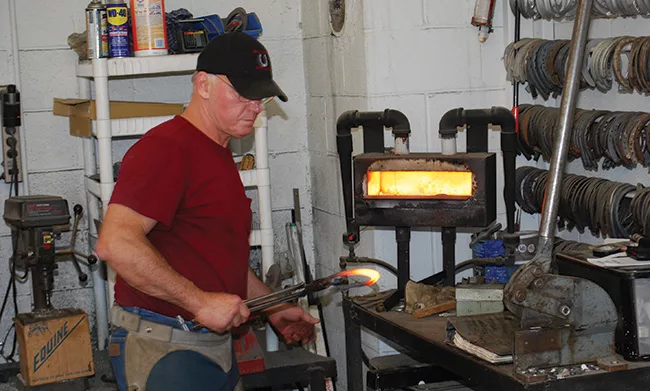American Farriers Journal
American Farriers Journal is the “hands-on” magazine for professional farriers, equine veterinarians and horse care product and service buyers.

Give some thought to where you place your forge in your shoeing setup. You want your anvil placed 4 or 5 feet away and to one side of your forge, so you can be close enough to quickly get your shoe or stock from forge to anvil, but far enough away to avoid excessive heat.
There is probably no single piece of equipment that has changed how farriers do their jobs more than the portable propane forge. From shaky beginnings when they were seen more as a novelty, they have become virtually a necessity for farriers who want to hot fit and hot shoe away from their own shops.
But propane forges put out a lot of heat, and while they seem relatively simple, a little basic maintenance and care in their use can make them more efficient, as well as extend their shelf life.
Tim Carr, owner of Blackbear Forge in Muskegon, Mich., now owns the Mankel Forge line. He says a properly cared for forge should last 8 to 10 years “if treated with respect.”
“Beyond that, relining may be required,” he says. “Operating the forge at a moderate setting will extend the life of the forge. Welding heat is not required to shape a horseshoe.”
Carr says the most common mistake made in using a forge involves “more is better” thinking and cranking up the gas flow.
“In my forge, it doesn’t take a lot of gas to produce a good heat,” he says. “Too much…